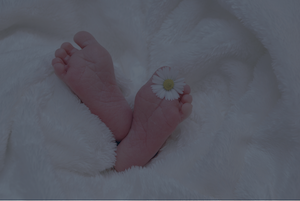Horror author's bevy of death items shown
EVANSTON, Ill. — Acclaimed horror writer Michael McDowell couldn’t get enough of death.
He collected photographs of people after their demise, whether from natural causes or after crossing paths with someone with a noose, knife or a gun. He gathered ads for burial gowns and pins containing locks of dead people’s hair. He even used a coffin housing a skeleton as his coffee table.
Now Northwestern University, which months ago purchased the “Death Collection” McDowell amassed in three decades before his own death in 1999, is preparing to open the vault.
Researchers studying the history of death, its mourning rituals and businesses that profit from it soon will be able to browse artifacts amassed by an enthusiast author Stephen King once heralded as “a writer for the ages.”
McDowell’s long career included penning more than two dozen novels, screenplays for King’s novel “Thinner” and director Tim Burton’s movies “Beetlejuice” and “The Nightmare Before Christmas.” He also wrote episodes for such macabre television shows as “Tales from the Darkside” and “Alfred Hitchcock Presents.”
“We are very removed from death today, and a lot of this stuff we see in this collection gives us a snapshot in how people have dealt with death generations ago in ways very different from today,” said Benn Joseph, a manuscript librarian at the school. “We look at it nowadays and think this is inappropriate or gory ... but when it was done, it was very much acceptable.”
Joseph spent months getting the 76-box collection — one containing a child’s coffin — ready to be studied. The archive, which officials said ultimately will go on public display, includes at least one artifact dating to the 16th century: a Spanish painting of a dead boy, his eyes closed, wearing a cloak with a ruffled collar.
The school bought the collection from McDowell’s partner for an undisclosed price.
McDowell’s younger brother, James, said he didn’t realize but wasn’t surprised by the extent of the collection.
“He always had kind of a gothic horror side to him,” James McDowell said in a telephone interview.
There are photographs and postcards from around the world. One, taken in 1899 in Cuba, shows a pile of skulls and bones. In another, a soldier in the Philippines poses with a man’s severed head.
There also are reminders of the infamous. Photographs show the people convicted of conspiracy for Abraham Lincoln’s assassination being hanged, with dozens of soldiers looking on and the U.S. Capitol looming in the background.
Much of the collection is devoted to the deaths of regular Americans and how they were memorialized in the 19th and early 20th centuries.
There are, for example, dozens of photographs that families had made into postcards of their dead children. Dressed in their finest clothes, many appear to be sleeping, absent any hint of the pain some undoubtedly experienced in their last days.
The collection also offers a glimpse into what families did after their loved ones died, at a time when they were preparing their homes to display the remains.
After choosing a burial gown — worn in ads by living models — many families then looked for a headstone. Traveling headstone salesmen in the early 20th century often carried around design samples in a box.
Those paying their respects in the 19th and early 20th centuries frequently selected a tribute song for the dead to play inside the family homes, Joseph said. There were some 100 popular pieces of topical sheet music, with such titles as “She Died On Her Wedding Day.”












